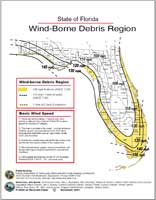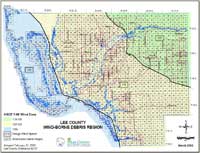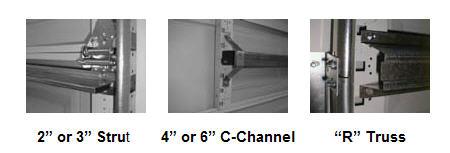| Hurricane Andrew is the second-most-destructive hurricane in U.S. history. The storm caused 65 deaths. The first named storm of the 1992 Atlantic hurricane season, Andrew struck the northwestern Bahamas, southern Florida at Homestead (south of Miami), and southwest Louisiana around Morgan City, Louisiana in August. Andrew caused $26.5 billion in damage ($38.1 billion in 2006 US dollars), with most of that damage cost in south Florida. It changed building codes for all of Florida and the coastal states.
Lessons Learned:The above photo is typical of how Andrew's wind-load pressure penetrated the garage door, next the garage door ceiling and then the roof. “Wind-load” refers to the forces or pressures that are exerted on a structure and the components comprising the structure (i.e., garage doors, entrydoors, windows, etc.) due to wind. Wind pressures are assumed to act both toward and away from a buildingsurface, and are referred to as “positive” and “negative” pressures respectively. In addition to the required static testing, some jurisdictions require garage doors to be tested for wind-borne debris resistance. These tests require garage doors to be missile impact-resistant (withstand multiple shots of a 9-pound 2x4 launched from a cannon at 50 feet per second followed by hundreds of wind cycles in both directions).
|



State |
County |
Southern Overhead Doors only sells hurricane wind-load code doors meeting all State and County requirements.

